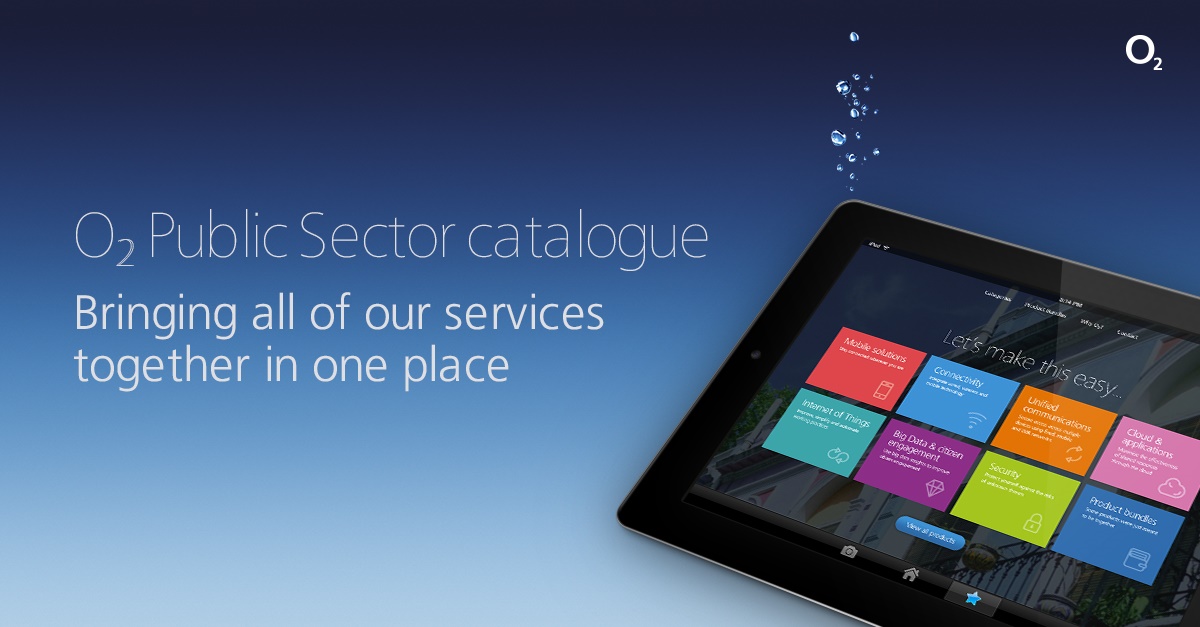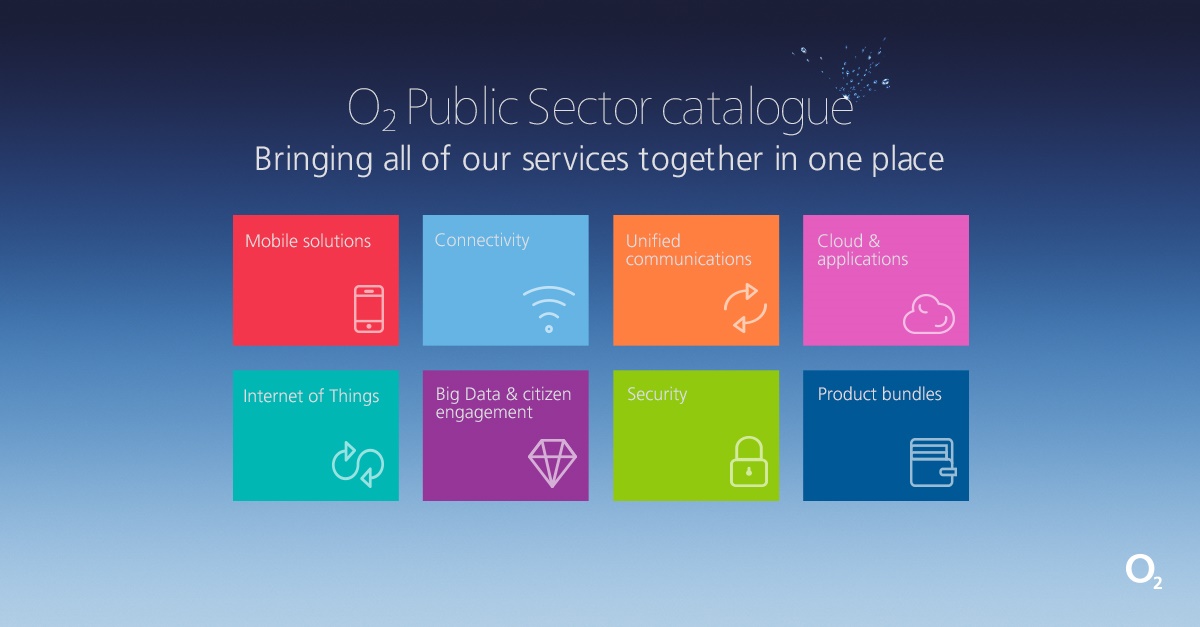29.02.16
Delivering digital outcomes
Sponsored Interview
PSE speaks to Billy D'Arcy, managing director, Public Sector Business at O2, UK about an industry first public sector catalogue.
Last summer, the Crown Commercial Service (CCS) launched the wide-ranging Network Services Framework RM1045 across the public sector, including the NHS.
The new agreement, which was originally meant to go live in April 2015 but slipped until July, aims to provide “simplified access” to network and telecommunications services, replacing the existing PSN Services, PSN Connectivity and Telephony Services agreements.
Anticipated to deliver savings in excess of £50m for government departments and the public sector, the new deal covers 10 technology lots – offering more opportunities for small and medium-sized enterprises (SMEs) to do business with the government.
One company that has made it onto the Network Services Framework is O2 and, in an effort to help simplify the procurement process, the digital communications company has launched an industry first public sector catalogue.
Matching a dynamic framework
As public bodies across the country face tough funding cuts over this Parliament, Billy D’Arcy, managing director of O2 Public Sector, says he recognises the fact that every penny counts and that historically procurement processes have been costly and time consuming.
“Catalogues also in the past have been very static and can be out of date very fast,” he said. “The Network Services Framework is a much more dynamic framework in how it works. Therefore, we believe that the catalogue should absolutely match this.”

In its efforts to simplify the buying process for public bodies, O2 has worked in conjunction with customers and the CCS. D’Arcy added that he wanted to make sure the catalogue development “wasn’t just done from an O2 perspective”.
Kelvin Lee, category director at the CCS, said: “O2 has created a flexible new product catalogue, which is fully aligned with the Network Services (RM1045) agreement.
“We hope this supplier innovation will benefit public sector organisations through quicker, more cost-effective procurement.”
And, in order to make sure the new catalogue wasn’t ‘static, clunky or unclear’, O2 has appointed a content manager to ensure the system is updated, “as much in real time as possible”.
D’Arcy told us he doesn’t want to see the catalogue wither on the vine, and wants it to become a “full blown m-commerce-type catalogue”.
Industry first
The catalogue, which is an industry first, contains information on all O2’s products and services including case studies, videos and details of its work with the public sector. Customers can also find information on which CCS frameworks can be used and step-by-step guides on how to use them.
“The aim is for customers to feel they can go from browsing to linking through to a framework and, effectively, to ultimately being able to be procure straight off that,” said D’Arcy. “There is still some work for O2 and the CCS to get to the end game there, but what we have done so far is quite a significant development.”
It was also noted that some O2 services, including many of its mobile and data solutions, can be delivered immediately via a Direct Award contract.
Outcomes focused
D’Arcy added that as well as being an industry first for O2, the catalogue has been centred on making everything easier for the customer. This has included having a focus on the digital outcomes for clients as well as the digital infrastructure.
“When we talk to councils and central government departments it is about getting in under the skin of an issue that they might have, and understanding through the technologies we have deployed in our network how we can actually help with the outcome which that organisation may be looking for,” said D’Arcy. “This is opposed to waiting for them to come and order products, piecing together something that may not work in totality.”
An example of where this outcomes-focused approach has worked is with Reading Borough Council, which wanted to find a way to join up more than 190 services intended to help people get into work.
The local authority wanted to create an app that would help young people not in education, employment or training in the area connect to a wide array of services. In order to achieve this, O2 provided funding, consultancy and technology to help develop the app, as well as support in engaging with local businesses. Following its successful launch, there has been talk of rolling the app out across the region.
Alan Magness, partnership co-ordinator Reading Borough Council, said throughout the process O2’s involvement went “way beyond the technology”.
D’Arcy added that O2 consciously took the decision not to focus just on providing infrastructure, “we are an organisation that concentrates on the outcomes and the services – particularly digital services”.
Delivering digital first
Last year, O2 Enterprise commissioned a YouGov survey which highlighted that integrating digital into the heart of business strategies is still much higher amongst private sector (55%) than public sector (42%) organisations.
Additionally, public sector organisations are less likely to be using devices for work, compared to private sector businesses. For example, public sector smartphone usage is down 17% when compared with smartphone usage in the private sector.
Asked why the public sector has lagged behind in its adoption of digital, especially with the government’s calls for a move towards ‘digital first’, D’Arcy said: “The public sector hasn’t helped itself in the past in the way in which it has managed large mobile contracts, and there was a perceived lack of value in terms of the costs associated with it.
“There is also recognition that the public sector needs transformation to keep pace with how citizens engage with services in a modern age, but you can’t do transformation without innovation. Therefore, helping with both of these is very important for us.”
Opportunities
Reflecting on O2’s position on the Network Services Framework, D’Arcy said the procurement frameworks don’t “give or grant you anything” other than the opportunity to operate in the marketplace.
“Ultimately, after that it is down to your execution,” he said.

Asked how important the public sector is becoming for O2, D’Arcy said in the last four years the company has seen its market share of call mobile services increase from 12% to 40%. And, following this upward trajectory, he hopes the new catalogue will help to create a digital marketplace in line with the ambitions of the CCS.
“We work very closely with government and there is no getting away from the fact that six million people work within the public sector in the UK. That in itself is a very large market,” he said.
“So for us to be at the forefront in terms of helping them with the outcomes that they need is critically important to us as a business. And that is what we hope to achieve with the catalogue.”
To view the new public sector catalogue, click here.